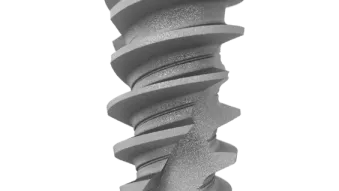
From failing dentition to a confident smile, in just one day
In real-world practice, surgical protocols and restorations should be tailored to the patient’s needs, and thoroughly communicated. The time we dedicate to patient communication makes a big difference in satisfaction and compliance in the long run.
Clinical situation
In November 2022, a 71-year-old male patient came to our practice. He was looking for help with his oral health issues and hoped to improve his esthetics, as well as to have fixed functional dentures. He had been experiencing difficulty with his upper and lower removable dentures, which had negatively impacted his quality of life.
Treatment planning
We examined the condition of the patient's jaw. He had residual dentition in both jaws with a severely compromised and esthetically unpleasing periodontal condition. We chose the All-on-4® treatment concept for both jaws based on the anatomy of the remaining bone.

A. Orthopantomogram (OPG) before treatment shows moderate-tosevere ridge resorption in both jaws.
Surgical solution
Surgery was performed a few days later. We extracted the hopeless teeth and placed the implants and Multi-unit Abutments according to the standard protocol of the All-on-4® treatment concept.
Choosing implants based on bone quality
We used NobelActive® TiUltra™ in the maxilla in order to achieve high primary stability in the soft bone and Immediate Function. Also, we chose NobelReplace® TiUltra in denser mandibular bone, as its tapered body prevents the generation of excessive stress during insertion. Both NobelActive and NobelReplace implants are suitable for demanding situations that require immediate implant placement and function.1-3

B. Intraoral view of the upper jaw before treatment. C. Occlusal view of healing caps to save space in the maxilla. D. Occlusal view of the impression copings in situ. E. Multi-unit Abutments Xeal™ 6 months after surgery. Note the healthy soft tissue before delivery of the final prosthesis. F. OPG showing the stable peri-implant bone level at the time of final prosthetic delivery. G. Periapical radiography showing the fully seated definitive prosthesis and stable bone level 6 months post-op. H. Patient's smile after receiving the provisional prosthesis.
References
1. Kolinski ML, Cherry JE, McAllister BS, et al. Evaluation of a variable-thread tapered implant in extraction sites with immediate temporization: a 3-year multicenter clinical study. J Periodontol. 2014 ;85(3):386-94.
Read on Pubmed
2. Todisco, M., & Gargari, M. Impact of rigid oral hygiene maintenance program on peri-implant tissue health: retrospective analysis of a 3-year clinical and radiological follow-up of implants supporting All-on-4 full-arch restorations. Oral & Implantology 2018 11(3), 169–176.
Read on Pubmed
3. Pozzi A, Tallarico M, Moy PK. Immediate loading with a novel implant featured by variable-threaded geometry, internal conical connection and platform shifting: three-year results from a prospective cohort study. Eur J Oral Implantol. 2015 ;8(1):51-63.
Read on Pubmed



